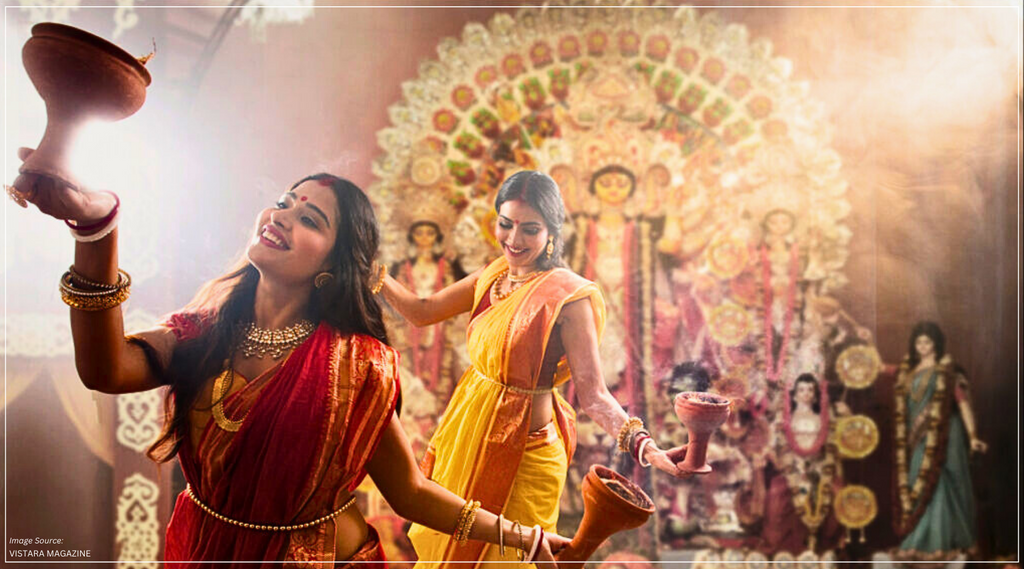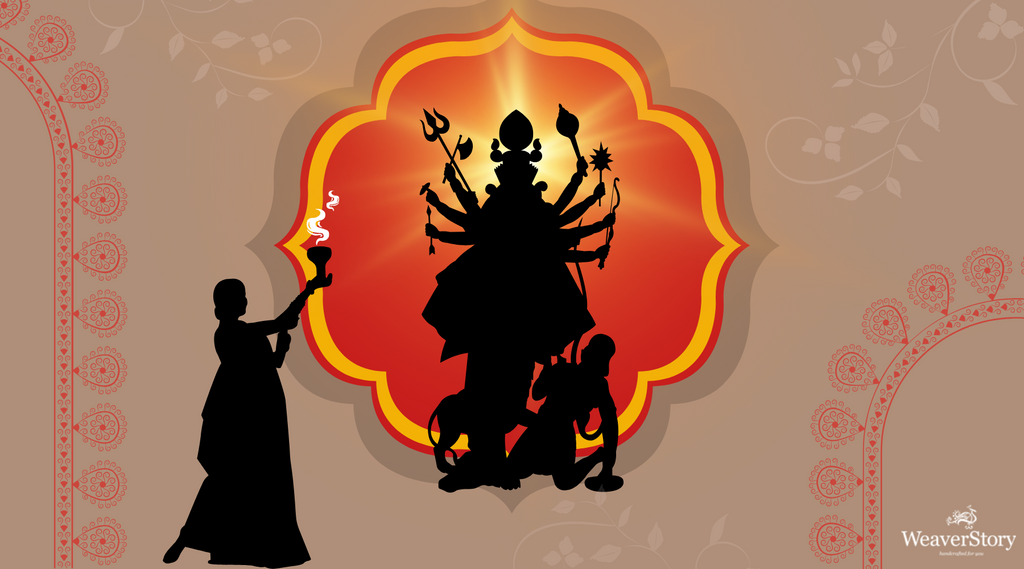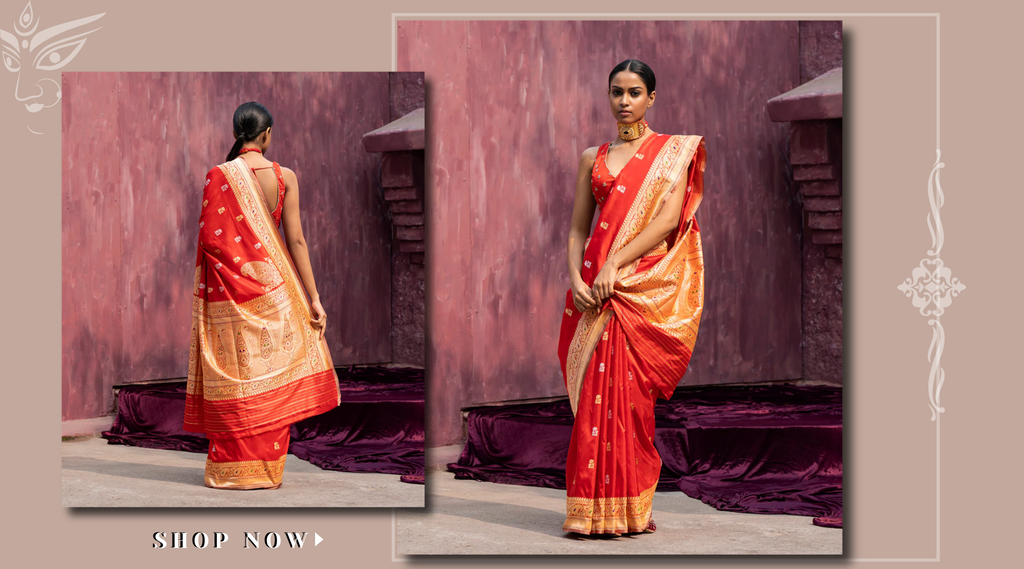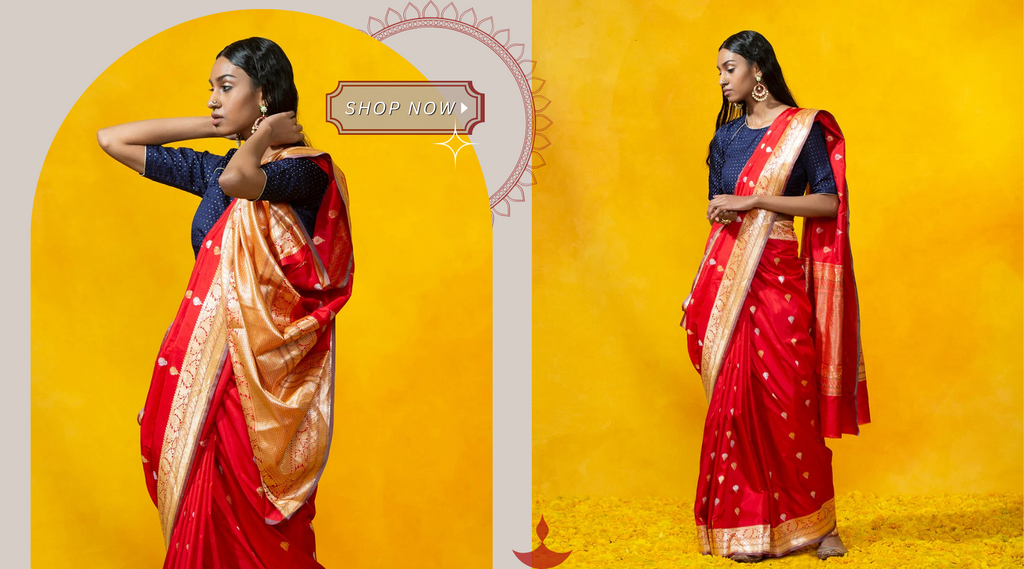-Vir Sanghvi
For those few days, West Bengal becomes the Land of Alta, Shankha Pola, Sindur, and Red Bindis, not to forget the archetypal Red and White Saris. Bengalis, wherever they may be, in whatever part of the world, are overwhelmed by a rush of memories and associations. They take this opportunity to make it a grand show of the sociocultural melting pot of Bengal and to create a collective cultural identity.
Bengalis have imbibed the tradition of wearing a white sari with a red border. The color red exemplifies the beauty of the Bengali woman. This vibrant color signifies love, passion, happiness, and celebration, which is also a reason why it is preferred in the culture. Meanwhile, white embodies purity and tranquillity, serving as a harmonious counterbalance to the vibrancy of red. ‘Pola’ and ‘Shankha’ bangles are part of the traditional ensemble, along with Sindoor in the parting of their hair, which is a significant part of the Bengali custom. Bengali women wear a big red teep (bindi) at the center of their forehead. They also smear sindoor in a big dot between their brows to resemble the bindi.
Maa Durga, the Bengali beauty in the Durga Puja pandals and the epitome of Shakti, dons the traditional white and red border Bengali sari. Her appearance is characterized by her long, flowing curls, fierce gaze, and a collection of ten formidable weapons, completing her look of ‘Mahishasura Mardini’.
Red Handloom Pure Katan Silk Banarasi Saree With Kadhwa Border And Meenakari Booti
During Dashami, the 10th day of Durga Puja, the brilliance of Sindoor takes center stage, eclipsing all other colors. It's a customary ritual for married women within the Bengali community to exchange warm wishes and festive greetings by playfully applying Sindoor (vermillion) on each other's faces. Women of all age groups, from newlyweds to the elderly, attire themselves in white sarees accentuated by deep red borders and adorned with precious gold jewellery for this special occasion. As they offer vermilion-coated flowers in reverence to Ma Durga, it's a heartfelt farewell to the beloved goddess.
Because it is the 'ether' connecting the usually divided Bengali community across the world, be it in Shanghai or San Jose, Mumbai or Moscow, Delhi or London, Thiruvananthapuram or Cape Town, be they right-wing fundamentalists or leftists, anarchists or Democrats, scientists or artists, eight or eighty!















